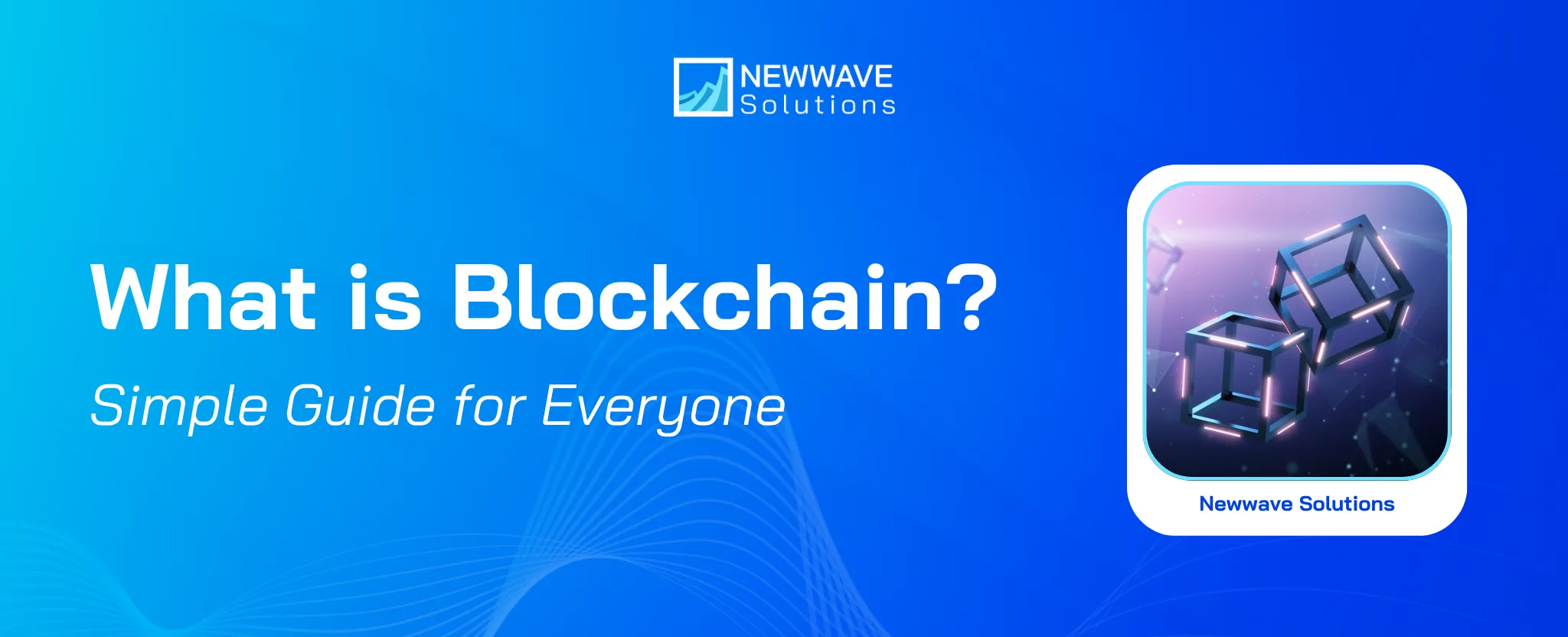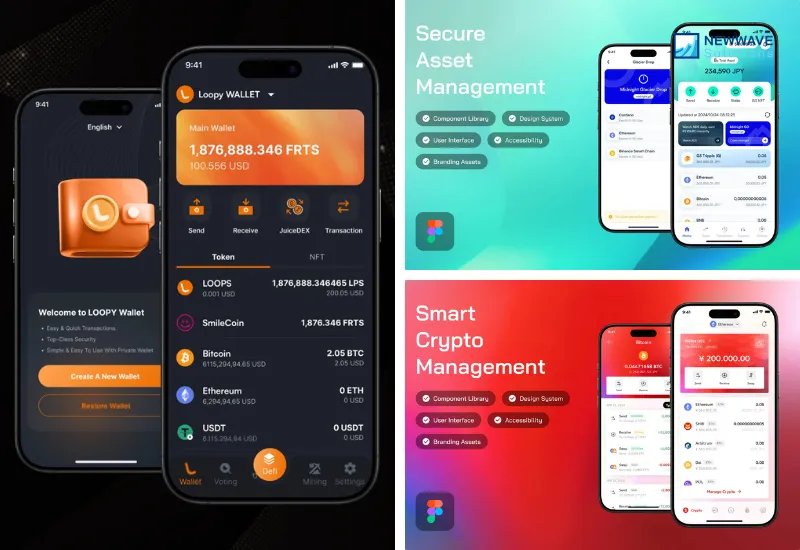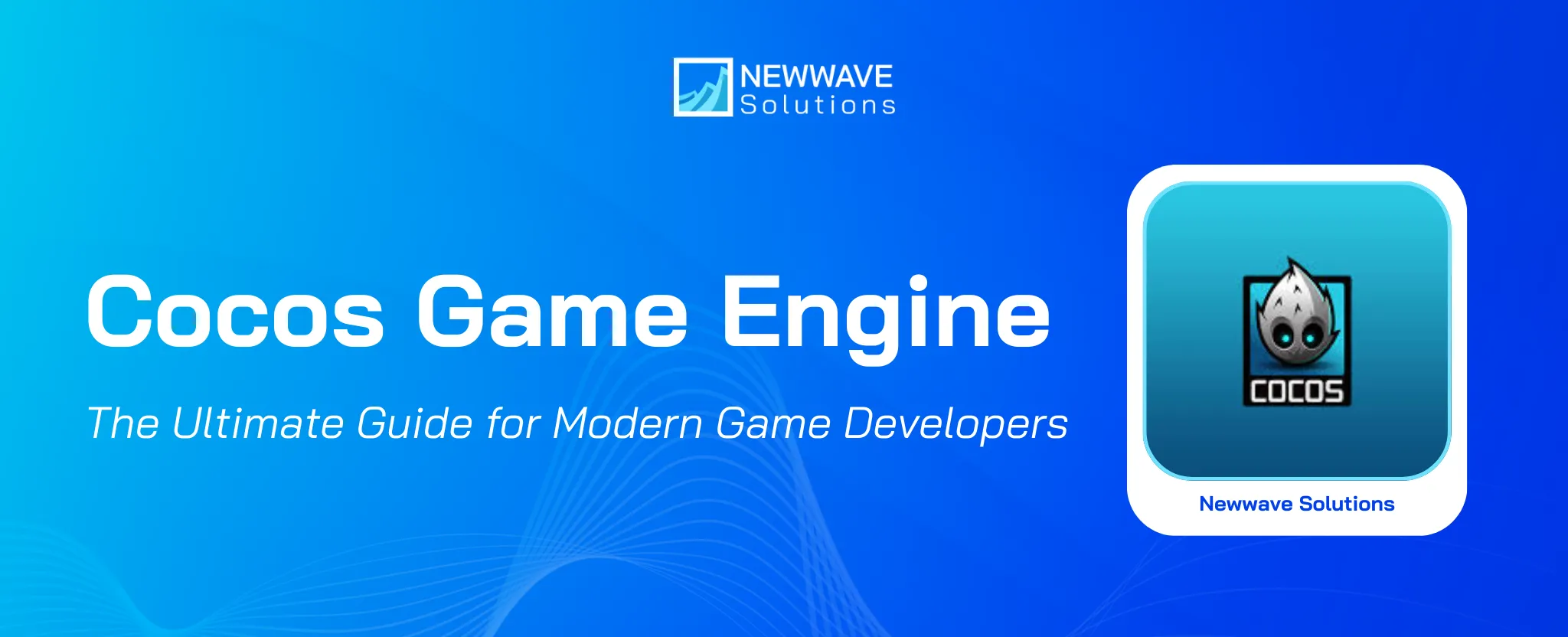What is Blockchain Technology? A Simple Guide for Everyone

In recent years, the term “what is blockchain technology” has become one of the most searched questions in the digital world. From cryptocurrency to supply chains, blockchain is reshaping how we store, share, and protect information. That’s why in this blog, we will explain what blockchain technology is, how it works, and why it matters — using simple language that anyone can follow.
What is Blockchain?

Blockchain is a digital system that records and shares data across a network of computers in a secure and transparent way. Instead of being stored in one place, the information is divided into small “blocks” that are linked together in a “chain.”
- Each block has three things: the data itself, its own unique code (called a hash), and the code of the block before it.
- Because of this structure, once information is written into the blockchain, it’s nearly impossible to change or erase.
In simple terms, think of blockchain as a public record book where many people can write down transactions or information, but no one can go back and secretly change what was already written.
4 Main Components of Blockchain Technology
- Nodes: Nodes are individual computers or devices that connect to the blockchain network. They work together to verify and approve every transaction, ensuring no invalid data enters the system.
- Ledger: The ledger is the digital record that permanently stores all transactions on the blockchain. Every participant has access to the same version, which builds trust and prevents unauthorized changes.
- Blocks: Blocks are structured units of data that contain transaction details, such as the sender, receiver and timestamp. Once a block is filled, it is sealed and added to the chain of previous blocks.
- Chain: The chain is the sequence that links all blocks together in chronological order. This creates a transparent timeline, making it possible to trace back any transaction to its origin.
- Consensus Mechanism: The consensus mechanism is the process that ensures all participants in the network agree on which transactions are valid. It acts like a voting system, preventing fraud and keeping the blockchain consistent.
5 Main Characteristics of Blockchain Technology
Blockchain Technology consists of 5 main features, including:
- Decentralization: Data isn’t stored in one place but shared across a network, reducing the risk of hacking or fraud. For instance, in banking, this means transactions don’t rely on one central server.
- Transparency: Every participant can see the recorded data, which builds trust between businesses and customers. A real-life example is food companies showing customers where their products are sourced.
- Immutability: Once the information is recorded, it cannot be changed. This is valuable in healthcare, where patient records need to remain accurate and tamper-proof.
- Security: Blockchain uses encryption to protect data, making it harder for unauthorized users to access or alter it. This ensures sensitive information, such as contracts, remains safe.
- No Intermediaries: Transactions can be confirmed directly between participants, without the need for central authorities or third-party intermediaries.
While blockchain refers to the underlying concept of a secure and decentralized ledger, its implementation can vary widely depending on purpose and structure. Different types of blockchains—such as public, private, consortium, and hybrid—offer distinct balances between transparency, control, and scalability. Choosing the right one depends on your business model and how much openness or governance your project requires.
Beyond types, there are also numerous blockchain platforms—like Ethereum, Hyperledger, Polygon, or Solana—each built with unique features, consensus mechanisms, and developer ecosystems. These platforms define how your blockchain solution performs, scales, and integrates with other technologies.
To understand these differences and choose the best foundation for your project, explore our in-depth guides on Blockchain Platforms.
How does Blockchain work?
Unlike traditional databases controlled by one company, a blockchain is decentralized, meaning no single authority owns or controls the information. Instead, every participant in the network holds a copy of the same record.
When someone adds new information — such as a payment, a contract, or a transaction — the network must collectively verify and approve it before it’s stored permanently. This process makes blockchain almost impossible to alter or hack, ensuring that every record is accurate, traceable, and tamper-resistant.
Here’s how it works step-by-step:
Step 1: A transaction is created
A user initiates an action, such as sending money, confirming ownership, or executing a smart contract. This is like adding a new entry to a shared digital ledger.
Step 2: The transaction is broadcast to the network
The request is sent to multiple computers (called nodes) in the blockchain network. These nodes work independently and ensure there is no central control.
Step 3: Nodes verify the transaction
Each node checks the validity of the transaction — confirming identities, available balances, or digital signatures. This collective verification eliminates fraud or duplicate actions.
Step 4: Verified transactions form a new block
After validation, several transactions are grouped together into a “block.” You can think of it as sealing one page in a continuously growing digital record.
Step 5: Consensus is reached
The network uses a consensus mechanism (like Proof of Work or Proof of Stake) to agree that this block is legitimate and can be added to the blockchain.
This consensus replaces the need for a third party, such as a bank or clearinghouse.
Step 6: The new block is linked to the chain
Once approved, the new block is connected to the previous ones, forming a chronological chain of data — hence the term blockchain.
Any attempt to change one block would alter the entire chain, making tampering nearly impossible.
Step 7: The blockchain updates across all nodes
Every node in the network updates its copy of the blockchain to include the new block. Now everyone has the same, synchronized version of the ledger.
Step 8: The transaction is complete
Your action — whether it’s a fund transfer, data entry, or smart contract execution — is now permanent, transparent, and traceable.
This is the core of how blockchain technology works: by combining distributed verification, cryptographic security, and shared consensus to build trust without intermediaries.
What are Blockchain Applications?
Blockchain applications go far beyond cryptocurrency, from finance and healthcare to logistics and gaming, organizations are using blockchain to achieve greater transparency, efficiency, and accountability. Below are the most significant areas where blockchain is reshaping industries and business models worldwide:
1. Finance and Banking
The financial sector remains the leading adopter of blockchain technology. Banks and fintech companies use it to process cross-border payments, automate settlements, and eliminate fraud through real-time verification. Each transaction is recorded on an immutable ledger, reducing manual errors and providing a complete audit trail that regulators and auditors can trust.
For example, JPMorgan Chase developed Onyx, a blockchain platform that accelerates international money transfers and strengthens transaction security. Blockchain also supports instant settlements and smart contracts in lending — enabling faster fund disbursement while minimizing default risks.
By automating reconciliation and reducing the need for intermediaries, blockchain makes banking more transparent, cost-efficient, and resistant to manipulation.
Moreover, blockchain supports the growing DeFi (Decentralized Finance) ecosystem, where users can lend, borrow, and trade assets peer-to-peer — without relying on central institutions. The result is faster, cheaper, and more transparent financial operations for both enterprises and individuals.
2. Cryptocurrency
Blockchain is the backbone of every cryptocurrency system, from Bitcoin to Ethereum.
It provides the decentralized infrastructure that records ownership and validates every transfer without a central authority. Each transaction is verified by a distributed network of nodes using consensus mechanisms like Proof of Work or Proof of Stake, ensuring trust, transparency, and immutability.
This decentralized trust model eliminates double-spending, enables borderless payments, and makes value exchange possible anywhere on Earth — 24/7. Beyond payment, blockchain in crypto now powers stablecoins, tokenized assets, and decentralized exchanges, all of which expand financial inclusion and innovation.
3. Healthcare
Healthcare software solutions faces a critical challenge: maintaining the security, accuracy, and accessibility of patient data. Blockchain offers a powerful solution through tamper-proof medical records that can be shared securely between authorized parties.
Instead of fragmented databases, blockchain allows hospitals, clinics, and insurers to store data in an encrypted, decentralized format. Each update or access is logged transparently, improving both data integrity and accountability.
This also streamlines processes like patient referrals, prescription tracking, and insurance claims.
For example, blockchain-based identity systems can give patients control over their data while allowing instant verification by healthcare providers — minimizing fraud and administrative delays, and ultimately improving care quality.
4. Education
Blockchain in education modernizes how academic credentials are managed and verified. Currently, verifying diplomas and transcripts is manual and slow. With blockchain, academic institutions can issue digital certificates that are cryptographically signed and permanently recorded.
Employers or other schools can instantly verify these credentials without contacting the issuing institution, saving time and reducing forgery.
Students gain lifetime ownership of their learning records, which they can present as verifiable digital portfolios anywhere in the world.
This model not only builds trust in global education systems but also supports the trend toward lifelong, borderless learning, where credentials follow individuals — not institutions.
5. Smart Contracts
Smart contracts are one of blockchain’s most transformative innovations.
They are self-executing agreements written in code and deployed on a blockchain. When predefined conditions are met, the contract automatically triggers actions such as payments or data transfers — with no intermediaries or delays.
These contracts power a wide range of use cases: automatic insurance payouts, supply-chain payments on delivery, or property transfers in real estate. Because smart contracts operate transparently and cannot be altered once deployed, they eliminate disputes, reduce administrative overhead, and enhance trust between parties.
Their ability to enforce business logic automatically makes them a core building block of decentralized applications (dApps) and digital ecosystems worldwide.
6. Logistics and Transportation
In logistics, blockchain enhances end-to-end visibility across supply chains that span continents.
Every stage — manufacturing, shipping, customs, delivery — can be logged on a shared blockchain ledger accessible to all stakeholders. This reduces paperwork, prevents data loss, and eliminates the possibility of unauthorized changes.
Digital documents like e-CMRs (electronic consignment notes) are signed and verified on blockchain, replacing manual signatures and enabling real-time proof of delivery.
Companies can track shipments using integrated QR codes or IoT sensors that automatically update the blockchain with location and condition data.
The result is faster clearance, fewer disputes, and higher trust between manufacturers, carriers, and customers.
7. Supply Chain Management
Modern supply chains are complex networks involving numerous intermediaries, making traceability a constant challenge. Blockchain provides a single, shared source of truth for every transaction, ensuring transparency from raw material sourcing to final delivery.
Each product’s journey is recorded with timestamps, allowing businesses and consumers to verify its origin, authenticity, and ethical compliance.
Walmart’s blockchain pilot, for example, reduced food traceability times from seven days to just 2.2 seconds.
When combined with IoT and AI analytics, blockchain enables predictive logistics and risk monitoring — helping companies reduce waste, optimize inventory, and respond swiftly to supply disruptions.
8. Gaming and Digital Assets
Blockchain is revolutionizing gaming through digital ownership and open economies.
Players can now buy, earn, or trade in-game assets represented as NFTs (non-fungible tokens), which remain under their control even outside the game environment.
This means every sword, skin, or collectible earned in a blockchain game is a real, tradable digital asset — not just licensed content.
Projects like Axie Infinity and The Sandbox have introduced “play-to-earn” models, where players generate tangible income through gameplay.
By use blockchain in game development solutions, developers are creating decentralized virtual economies that give players power over their creations, fostering engagement and monetization in ways traditional games never allowed.
9. Voting and Governance
Blockchain introduces a path toward tamper-proof, verifiable digital voting systems.
Each vote can be recorded as a unique, encrypted transaction on a public ledger, preventing duplication, manipulation, or deletion.
Because the network requires consensus to validate each entry, altering results is practically impossible without controlling the majority of the system — a near-impossible feat.
This makes blockchain-based voting more secure, auditable, and accessible.
Governments in countries like Estonia and South Korea are already experimenting with blockchain elections to increase citizen trust, reduce costs, and improve participation — pointing toward a future of transparent, technology-driven governance.
How Does Blockchain Technology Help When Sharing Data?
Blockchain technology reshapes how data is shared by replacing centralized control with distributed trust. Instead of storing information in one server or managed database, blockchain distributes identical copies of data across a secure network of participants. Each update is validated through cryptographic consensus, creating a tamper-resistant, verifiable record that everyone can rely on.
This architecture makes data sharing inherently more secure, transparent, and efficient. Every transaction or update is time-stamped and linked to the previous one, forming an unchangeable chain of evidence. Because no single party can alter or delete records without network approval, blockchain eliminates the risks of unauthorized edits, data loss, or hidden manipulation.
When different organizations — such as suppliers, banks, or healthcare providers — need to exchange information, blockchain acts as a single source of truth. Each participant can access the same verified data in real time, removing duplication and the need for intermediaries. Smart contracts further enhance this process by automating data permissions and ensuring that only authorized users can view or modify specific information.
The result is trusted data exchange across complex ecosystems. Companies can share sensitive records without exposing private details, regulators can verify compliance instantly, and global teams can collaborate confidently knowing that every data point is authentic and traceable. In short, blockchain transforms data sharing from a fragile process into a secure, auditable, and transparent foundation for digital collaboration.
Pros and Cons of Blockchain
Like any innovation, blockchain comes with both strengths and challenges. Understanding them helps businesses decide how to apply them wisely. Let’s explore the main pros & cons of Blockchain Technology below:
|
Pros |
Cons |
|
|
What Blockchain Can Do in the Future?
As known as one of the emerging technology development solutions, blockchain’s potential is far from fully unlocked. While many people know it through cryptocurrency, its future applications could transform how entire industries operate. Here are some key opportunities to watch out for with this tech:
- Global Trade and Finance: Faster, low-cost international payments and borderless transactions could make cross-border trade more seamless for businesses of all sizes.
- Smart Cities and IoT Integration: Blockchain can provide secure connections between millions of devices in smart homes, factories, and cities. This ensures reliable data sharing without a single point of failure.
- Digital Identity: Instead of relying on multiple passwords or ID documents, blockchain could give individuals a single secure identity to use across services like banking, healthcare, and travel.
- Supply Chain Transparency at Scale: From luxury goods to everyday food, blockchain could make it standard for customers to see where their products come from, reducing fraud and counterfeit risks.
- Tokenization of Assets: Real estate, art, and even intellectual property could be tokenized, making it easier to buy, sell, or invest in them digitally.
- New Governance Models: Decentralized organizations (DAOs) may allow businesses and communities to make collective decisions with higher transparency and accountability.
FAQs
Is blockchain only useful for big corporations, or can small businesses benefit too?
Blockchain isn’t just for large enterprises with complex systems. Small and medium-sized businesses can benefit as well — often even more directly. By using blockchain, they can streamline digital payments, verify supply chains, and protect customer data without investing in heavy infrastructure. For instance, a small retailer can trace the origin of goods, or a startup can use smart contracts to automate transactions and reduce administrative costs. Today’s blockchain-as-a-service platforms make it affordable and scalable for businesses of any size.
Do you need cryptocurrency to use blockchain technology?
Not at all. Cryptocurrency is just one application of blockchain — not a requirement. The same underlying technology can operate without tokens or coins, serving as a secure ledger for data or contracts. Industries like healthcare, logistics, real estate, and government use blockchain to manage records, verify identities, and share information safely — with no connection to crypto trading.
What skills or resources are required to adopt blockchain in a company?
Successful blockchain adoption starts with a well-defined use case — understanding the problem you want to solve. From there, companies need access to technical expertise in blockchain frameworks (like Ethereum, Hyperledger, or Polygon), smart-contract logic, and integration with existing systems. Most organizations partner with experienced blockchain development companies such as Newwave Solutions, which provides consulting, architecture design, and end-to-end implementation support.
How long does it take to develop a blockchain-based application?
The development timeline depends on scope and complexity. A proof-of-concept or MVP can typically be built in 8–12 weeks, while a fully featured enterprise platform may take 6–12 months or more. Key factors include the number of users, level of security, and integration with legacy systems. Collaborating with a skilled blockchain team helps accelerate delivery, minimize rework, and ensure the solution scales reliably as your business grows.
Because time directly affects total investment, understanding how development phases influence your budget is essential. For a detailed breakdown of what impacts blockchain pricing — from tech stack choices to maintenance, you can check out our full guide on Blockchain Development Cost.
Conclusion
Conclusion, blockchain technology is not just a buzzword — it’s a secure, transparent, and decentralized system that redefines how data and value are exchanged. From finance and healthcare to logistics, real estate, and public services, blockchain is already transforming traditional operations by improving trust, traceability, and efficiency.
However, adopting blockchain successfully requires more than technology — it demands strategic design, the right architecture, and expert implementation. Every business has unique needs, and blockchain must be tailored to fit those objectives, not forced into them. That’s where we come in.

At Newwave Solutions, we help businesses unlock the true potential of blockchain through end-to-end blockchain development services — from consulting and use-case validation to custom DApp and smart contract development. With a skilled engineering team based in Vietnam, we combine technical depth, cost efficiency, and global delivery experience to deliver blockchain solutions that are secure, scalable, and business-ready.
Whether you want to streamline payments, build decentralized platforms, or enhance data security, Newwave Solutions provides the expertise and flexibility to bring your vision to life.
Visit Our Portfolio to see more what we can do for your projects and let’s build the future of your business with blockchain — designed, developed, and delivered by Newwave Solutions.
To Quang Duy is the CEO of Newwave Solutions, a leading Vietnamese software company. He is recognized as a standout technology consultant. Connect with him on LinkedIn and Twitter.

Read More Guides
Get stories in your inbox twice a month.
Let’s Connect
Let us know what you need, and out professionals will collaborate with you to find a solution that enables growth.




Leave a Reply